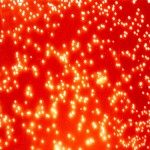Link to Pubmed [PMID] – 38497937
Link to HAL – pasteur-04544105
Link to DOI – 10.1093/jac/dkae056
Journal of Antimicrobial Chemotherapy, 2024, pp.dkae056. ⟨10.1093/jac/dkae056⟩
Abstract Background Evidence-based clinical susceptibility breakpoints have been lacking for antimicrobial agents used for diphtheria. Objectives We aimed to evaluate broth microdilution and disc diffusion methods and create a dataset of MIC values and inhibition zone diameters (ZDs) from which breakpoints could be determined. Methods We included 400 recent clinical isolates equally distributed by species (Corynebacterium diphtheriae and Corynebacterium ulcerans) and by national surveillance programmes (France and Germany). Non-duplicate toxigenic and non-toxigenic isolates were chosen to enable the inclusion of a diversity of susceptibility levels for the 13 agents tested. Broth microdilution and disc diffusion, using EUCAST methodology for fastidious organisms, were used. Results The distributions of MIC and ZD values were largely in agreement among methods and countries. Breakpoints to allow categorization of WT isolates as susceptible, i.e. susceptible (S) or isusceptible, increased exposure (I) were determined for 12 agents. The data supported a breakpoint for benzylpenicillin and amoxicillin of resistant (R) > 1 mg/L since WT isolates were inhibited by 1 mg/L or less. WT isolates were categorized as I (S ≤ 0.001 mg/L) for benzylpenicillin, emphasizing the need for increased exposure, and S (S ≤ 1 mg/L) for amoxicillin. Erythromycin breakpoints were set at S ≤ 0.06 mg/L and R > 0.06 mg/L. The corresponding ZD breakpoints were determined for all agents except amoxicillin, for which categorization was based on benzylpenicillin results. Conclusions This work provided a large set of antimicrobial susceptibility data for C. diphtheriae and C. ulcerans, using a harmonized methodology. The dataset allowed EUCAST and experts in the diphtheria field to develop evidence-based breakpoints in January 2023.




